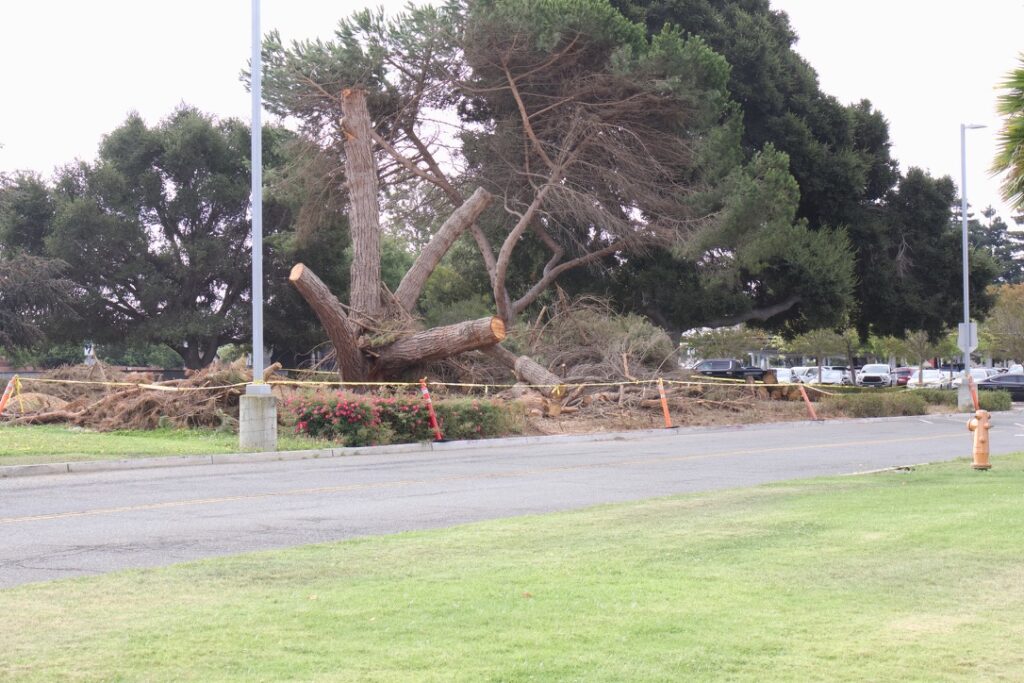On Sunday, Aug. 3, part of the decades-old stone pine tree that adorned the Hesperian entrance to Chabot’s campus broke away from the main trunk and fell into the road, creating a safety hazard. One of the larger trees on campus, the debris from the fallen tree is still being removed over a month later.
Chabot’s Maintenance & Operations Director, John Seybert, updated the campus about the status of the pine tree removal:
“Although the pine tree appeared to be healthy, it suffered a failure hat caused it to fall over due to imbalanced weight; Stone Pine trees have a tendency to do that. Initially, on Sunday, August 3, when the tree fell, it was blocking the internal campus road used by AC transit buses. Rene and his crew responded to the emergency that evening, removed the tree from the roadway, and made the area safe.
Since then, in accordance with safe tree work practices, Rene (a Certified Arborist) and his crew have been working to remove the tree completely; this has also been a savings of over $10,000 to have it done internally. Due to other needs, and some equipment problems, the work continues, but the area has been maintained safely while the work proceeds.
We are not subject to local tree ordinances. Additionally, because there was an acute failure of the tree, ordinances would not apply to work to remove the tree.”
Chabot Grounds Supervisor, Rene Delgado, added some insight as to why trees are typically removed, “The main reasons we remove them are either because of bad health and damage, or because it’s not safe.” He went on to say, “It depends on the situation, but we don’t remove trees just to remove them. We really like having trees around campus.”

Trees planted in urban environments are proven to provide both environmental and psychological benefits. They aid in reducing greenhouse gasses by storing carbon dioxide and releasing oxygen, decrease flood risk by absorbing excess stormwater, and contribute to keeping urban environments cool.
According to a 2020 study published in the International Journal of Environmental Research and Public Health, They also provide protection from ultra violet radiation, and they are associated with reduced stress & anxiety.
“We try to provide a safe and welcoming environment,” said Delgado. “If we have well maintained grounds, with good plants, it feels more welcoming for the students and the community.”
Chabot students agree that having a green campus makes both a positive aesthetic and psychological impact.
“Honestly, when I was in high school, there were like a couple trees … and the rest of it was kind of bleak. So coming to Chabot, it feels a lot more open and freeing.” said Fletcher Nunes while enjoying the shade beneath the trees in front of building 400.

“That’s what makes students want to come here. That makes people who aren’t from Hayward or California say, ‘Man, that school looks really nice. Let me see more about it.’,” commented Phoenix Williams about Chabot’s plant life.
Excavation of the stone pine tree was expected to be completed by Friday, Sept. 12, but the main trunk and debris remain standing at the time of writing this article. As of this publication, it has not been decided what will happen to the vacated area left behind.



